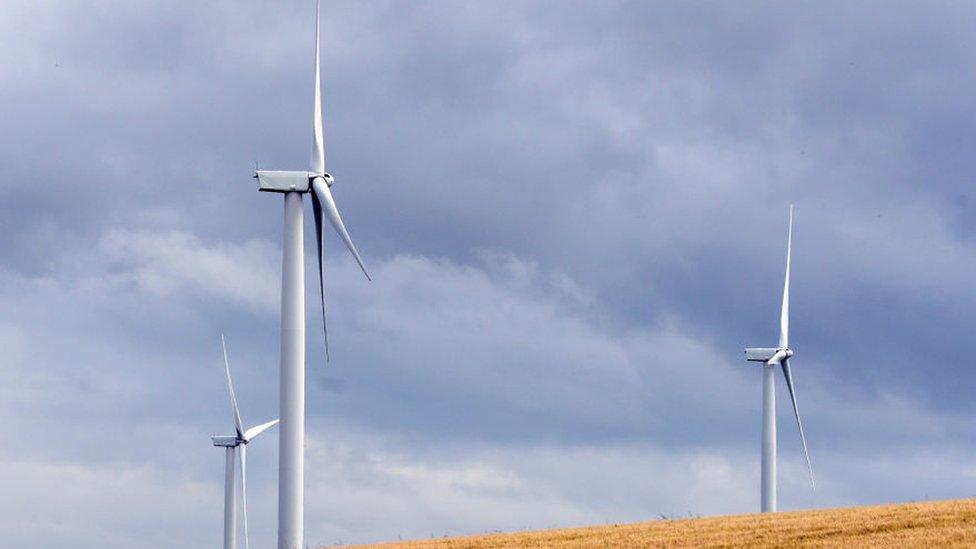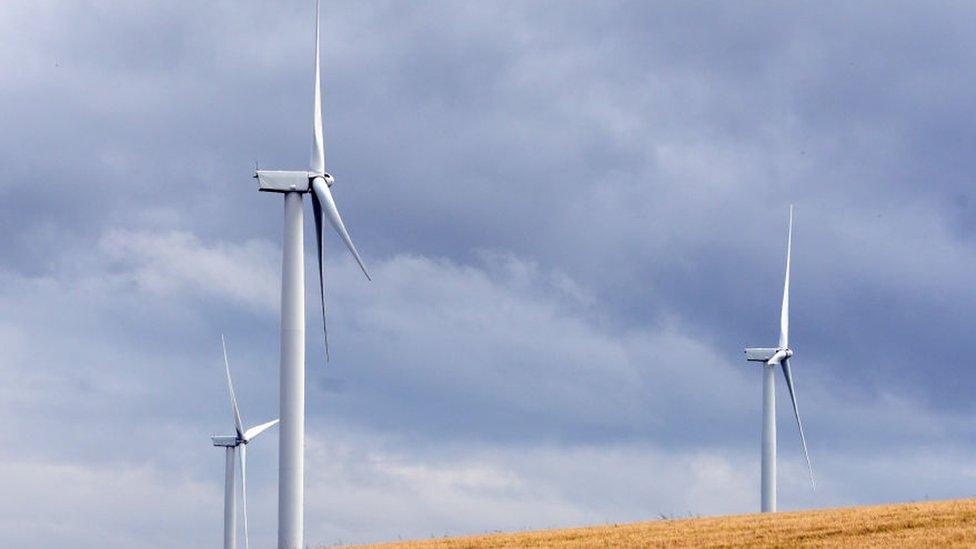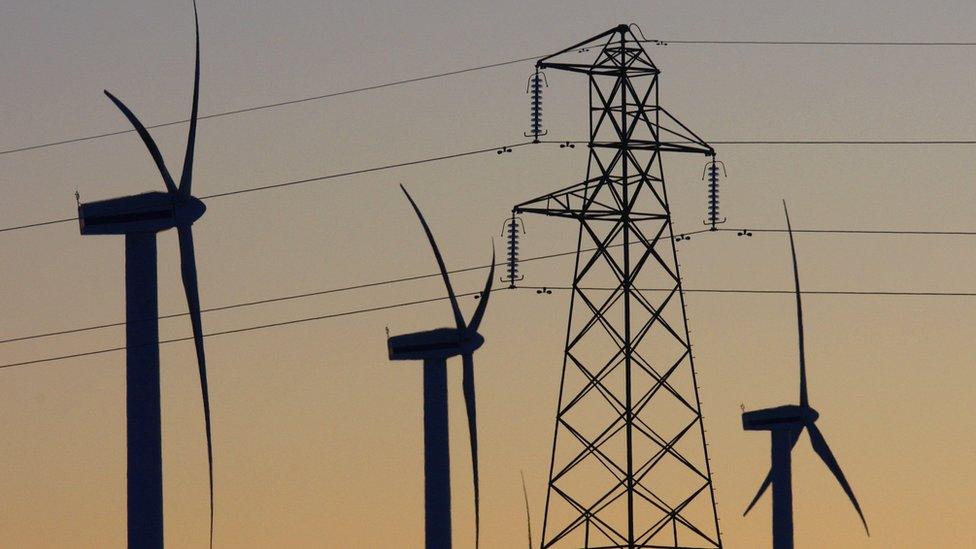Renewable electricity use falls in Northern Ireland
- Published

The amount of renewable electricity used in Northern Ireland fell slightly in the year to June 2023.
Department of the Economy figures show renewable sources provided 45.5% of electricity consumption, down 1.2% on 2021-22.
Despite a slight fall, wind is still the largest provider for renewable electricity, accounting for 83.5% of the overall renewables total.
Total renewable generation increased by 177.6% in the past decade.
Northern Ireland has a legally-binding commitment of producing 80% electricity from renewable sources by 2030.
During the year from July 2022 to June 2023, the volume of electricity consumption in Northern Ireland was 7,420 Gigawatt hours (GWh).
Local renewable resources, including wind, biogas, biomass, solar and landfill gas, provided 3,379 GWh of that amount.
Over the past 10 years, electricity consumption has fallen by 8.9%.
A major part of getting to the 80% renewable electricity target is supposed to be the development of offshore wind farms.
Northern Ireland has no offshore wind facilities and a number of proposed projects have been abandoned.
However, earlier this year, the Department for the Economy and the Crown Estate, which controls the sea bed, agreed a statement of intent towards establishing offshore wind leasing, external for Northern Ireland.
Related topics
- Published9 March 2023

- Published7 September 2023

- Published12 October 2022
